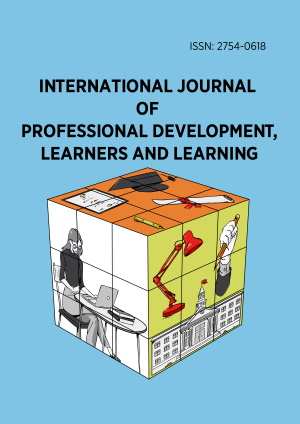Research Article
Who benefits and when? Understanding differential treatment effects of an online professional development program
More Detail
1 Penn State University, University Park, PA, USA2 University of Nebraska–Lincoln, Lincoln, NE, USA3 Penn State Better Kid Care, State College, PA, USA* Corresponding Author
International Journal of Professional Development, Learners and Learning, 6(1), January 2024, ep2404, https://doi.org/10.30935/ijpdll/14148
Submitted: 24 August 2023, Published: 25 January 2024
OPEN ACCESS 3014 Views 1077 Downloads
ABSTRACT
The quality of educational experiences has a direct impact on children’s development and overall wellbeing. To ensure that children receive high-quality education experiences it is important that educators are trained in current best practices and feel efficacious in the implementation of these practices. Professional development (PD) has shown to be an effective mechanism for addressing educator knowledge and promoting feelings of self-efficacy. However, multiple barriers exist to delivering in-person PD (e.g., time and resource constraints). Online PD represents an attractive alternative for many educators, but the research on the effectiveness of online PD is mixed. The current study evaluates the effectiveness of a series of PD courses designed to promote positive youth development and identifies subgroups of educators who benefitted from the courses more than others. Results indicated improvement in feelings of self-efficacy around the implementation of practices to promote positive youth development, but new teachers in afterschool programs benefitted more than other educators.
CITATION (APA)
Bayly, B. L., Krehbiel, M., Wise, E., Lodl, K., & Anthony, C. (2024). Who benefits and when? Understanding differential treatment effects of an online professional development program. International Journal of Professional Development, Learners and Learning, 6(1), ep2404. https://doi.org/10.30935/ijpdll/14148
REFERENCES
- Barnett, W. S. (2011). Effectiveness of early educational intervention. Science, 333(6045), 975-978. https://doi.org/10.1126/science.1204534
- Berkel, C., Mauricio, A. M., Schoenfelder, E., & Sandler, I. N. (2011). Putting the pieces together: An integrated model of program implementation. Prevention Science, 12(1), 23-33. https://doi.org/10.1007/s11121-010-0186-1
- Bolck, A., Croon, M., & Hagenaars, J. (2004). Estimating latent structure models with categorical variables: One-step versus three-step estimators. Political Analysis, 12(1), 3-27. https://doi.org/10.1093/pan/mph001
- Bradshaw, L. D. (2015). Planning considerations for afterschool professional development. Afterschool Matters, 21, 46-54. https://www.afterschoolga.org/wp-content/uploads/2015/06/ Afterschool_Professional_Development-1.pdf
- Bragg, L. A., Walsh, C., & Heyeres, M. (2021). Successful design and delivery of online professional development for teachers: A systematic review of the literature. Computers & Education, 166, 104158. https://doi.org/10.1016/j.compedu.2021.104158
- Burger, K. (2010). How does early childhood care and education affect cognitive development? An international review of the effects of early interventions for children from different social backgrounds. Early Childhood Research Quarterly, 25(2), 140-165. https://doi.org/10.1016/j.ecresq.2009.11.001
- Collins, L. M., & Lanza, S. T. (2009). Latent class and latent transition analysis: With applications in the social, behavioral, and health sciences. John Wiley & Sons. https://doi.org/10.1002/9780470567333
- Dede, C., Jass Ketelhut, D., Whitehouse, P., Breit, L., & McCloskey, E. M. (2009). A research agenda for online teacher professional development. Journal of Teacher Education, 60(1), 8-19. https://doi.org/10.1177/0022487108327554
- Desimone, L. M., & Garet, M. S. (2015). Best practices in teacher’s professional development in the United States. Psychology, Society, & Education, 7(3), 252-263. https://doi.org/10.25115/psye.v7i3.515
- Diem, K. G., Hino, J., Martin, D., & Meisenbach, T. (2011). Is extension ready to adopt technology for delivering programs and reaching new audiences. Journal of Extension, 49(6), 1. https://doi.org/10.34068/joe.49.06.01
- Early Educator Central. (2015). Know see do improve framework. https://eclkc.ohs.acf.hhs.gov/sites/default/files/pdf/knowsee-do-framework.pdf
- Guo, Y., Justice, L. M., Sawyer, B., & Tompkins, V. (2011). Exploring factors related to preschool teachers’ self-efficacy. Teaching and Teacher Education, 27(5), 961-968. https://doi.org/10.1016/j.tate.2011.03.008
- Han, S. S., & Weiss, B. (2005). Sustainability of teacher implementation of school-based mental health programs. Journal of Abnormal Child Psychology, 33(6), 665-679. https://doi.org/10.1007/s10802-005-7646-2
- Holzberger, D., Philipp, A., & Kunter, M. (2014). Predicting teachers’ instructional behaviors: The interplay between self-efficacy and intrinsic needs. Contemporary Educational Psychology, 39(2), 100-111. https://doi.org/10.1016/j.cedpsych.2014.02.001
- Jalongo, M. R. (2021). The effects of COVID-19 on early childhood education and care: Research and resources for children, families, teachers, and teacher educators. Early Childhood Education Journal, 49(5), 763-774. https://doi.org/10.1007/s10643-021-01208-y
- Little, T. D., Chang, R., Gorrall, B. K., Waggenspack, L., Fukuda, E., Allen, P. J., & Noam, G. G. (2020). The retrospective pretest–posttest design redux: On its validity as an alternative to traditional pretest-posttest measurement. International Journal of Behavioral Development, 44(2), 175-183. https://doi.org/10.1177/0165025419877973
- National Afterschool Association. (2011). Core knowledge and competencies. https://naaweb.org/resources/core-competencies
- Parsons, S. A., Hutchison, A. C., Hall, L. A., Parsons, A. W., Ives, S. T., & Leggett, A. B. (2019). US teachers’ perceptions of online professional development. Teaching and Teacher Education, 82(1), 33-42. https://doi.org/10.1016/j.tate.2019.03.006
- Postholm, M. B. (2012). Teachers’ professional development: A theoretical review. Educational Research, 54(4), 405-429. https://doi.org/10.1080/00131881.2012.734725
- Powell, C. G., & Bodur, Y. (2019). Teachers’ perceptions of an online professional development experience: Implications for a design and implementation framework. Teaching and Teacher Education, 77, 19-30. https://doi.org/10.1016/j.tate.2018.09.004
- Spoth, R., Guyll, M., Redmond, C., Greenberg, M., & Feinberg, M. (2011). Six-year sustainability of evidence-based intervention implementation quality by community-university partnerships: The PROSPER study. American Journal of Community Psychology, 48(3-4), 412-425. https://doi.org/10.1007/s10464-011-9430-5
- Zaslow, M., Tout, K., Halle, T., Whittaker, J. V., & Lavelle, B. (2010). Toward the identification of features of effective professional development for early childhood educators. Literature review. Office of Planning, Evaluation and Policy Development, US Department of Education. https://eric.ed.gov/?id=ED527140

 The articles published in this journal are licensed under the CC-BY Creative Commons Attribution International License.
The articles published in this journal are licensed under the CC-BY Creative Commons Attribution International License.